| Year-round Resident | |
| Has Nested in Park |
Red-breasted Nuthatch
Sitta canadensis
| Infrequently Seen |
White-breasted Nuthatches are year-round residents who regularly breed at Monticello Park. They forage actively, and they can be seen on the trunks of trees. Nuthatches have a different perspective than most birds, spiraling down tree trunks head first. This allows them to see insects missed by woodpeckers and other species who forage by moving up a tree trunk. Only a small number of Red-breasted Nuthatches have ever been seen at Monticello. They are more common in colder climates and generally come to the Washington metro area only when they do not have an adequate winter food supply where they normally live. During some winters, a lot of them come south, but in other years, few or none will be seen in the area. Even in years when they are seen in other parts of the Washington area, they tend not to be at Monticello Park, because it does not contain their preferred habitat of conifers and mixed woods.
Where to See Them in the Park
White-breasted Nuthatches can be seen anywhere in the park. They are often vocal and can be easy to find. There is no good place in the park to look for Red-breasted Nuthatches.
Physical Descriptions
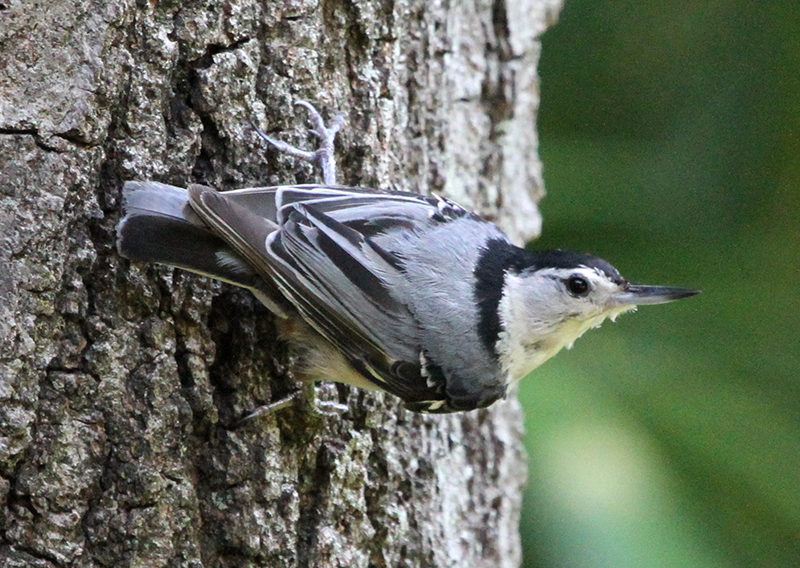
White-breasted Nuthatches are round with a short tail. They have a white face, a black crown and nape, and a blue-gray back. The bill is narrow, which allows them to more effectively probe for insects on trunks and branches. The sexes look alike, and adult spring and fall plumage looks similar.
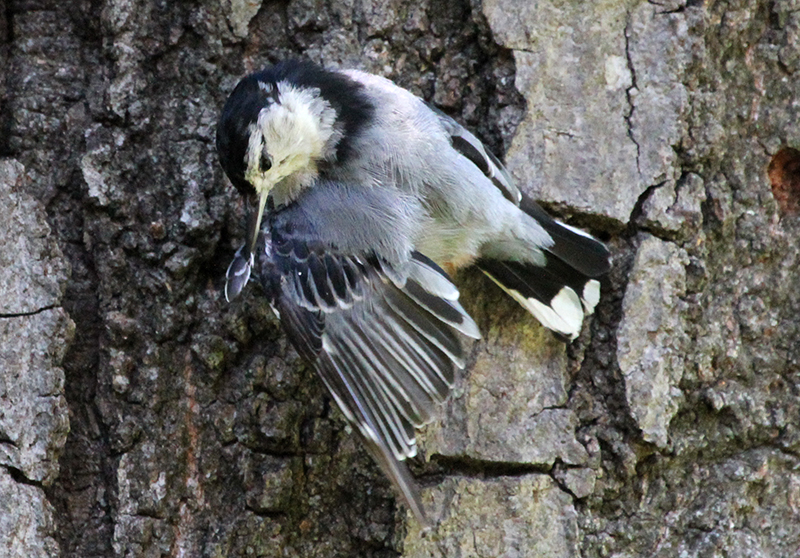
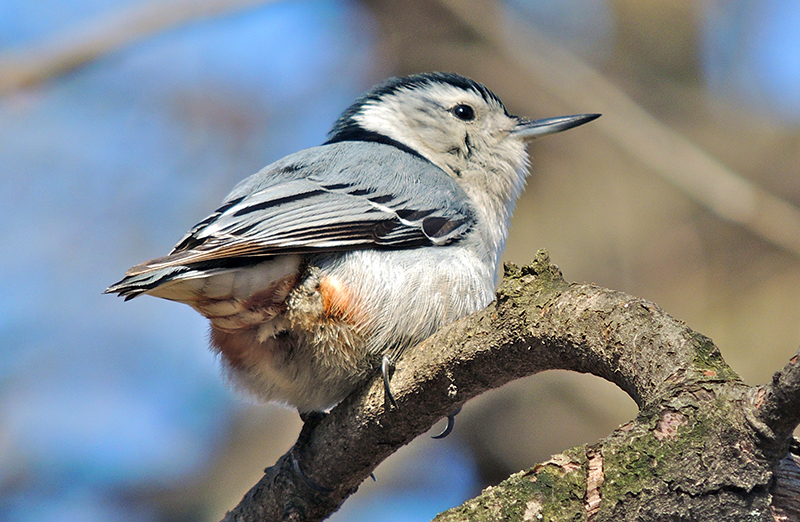
They have white on their outer tail feathers, and their undertail is rufous.
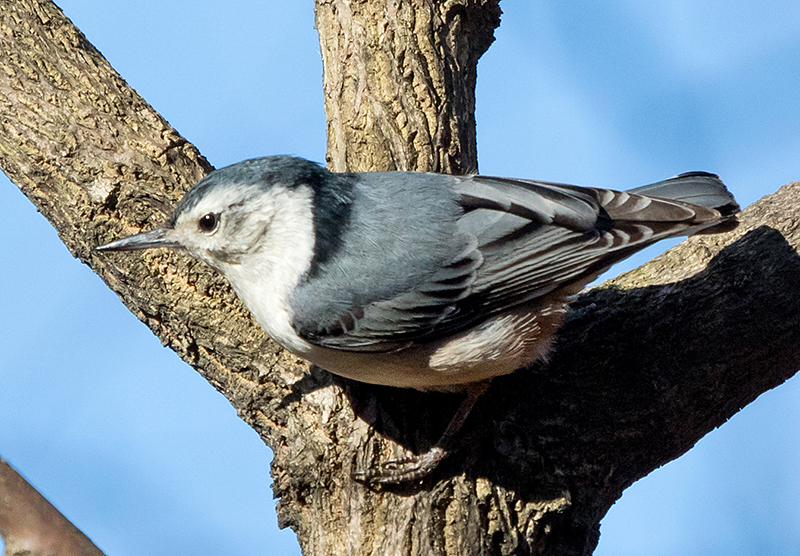
White-breasted Nuthatches have strong legs and feet for clinging to trees. They are not shy, and they sometimes forage on a trunk very close to people.
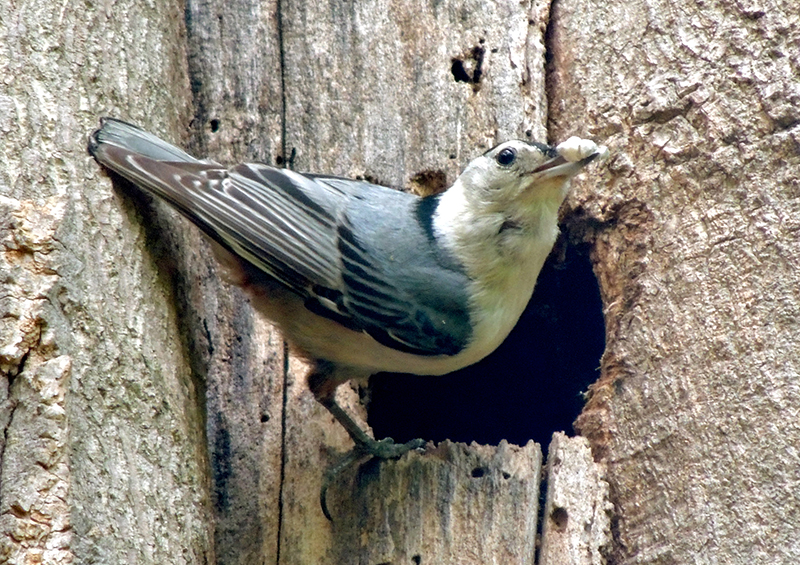
Nuthatches are cavity nesters, and White-breasted Nuthatches have nested at Monticello, including in the dog exercise area. They have large broods, ranging from 5 to 10. Incubation lasts about 12 days and is done only by the female. During this time, the male brings food to her. When the young hatch, both the male and female bring food to them and remove their fecal sacs so that the nest will stay clean. The young remain in the nest for two weeks. After they leave the nest, the parents may give them food for another two weeks. Even when the young can fend for themselves, they often stay in the same family group with their parents, sometimes into the autumn.
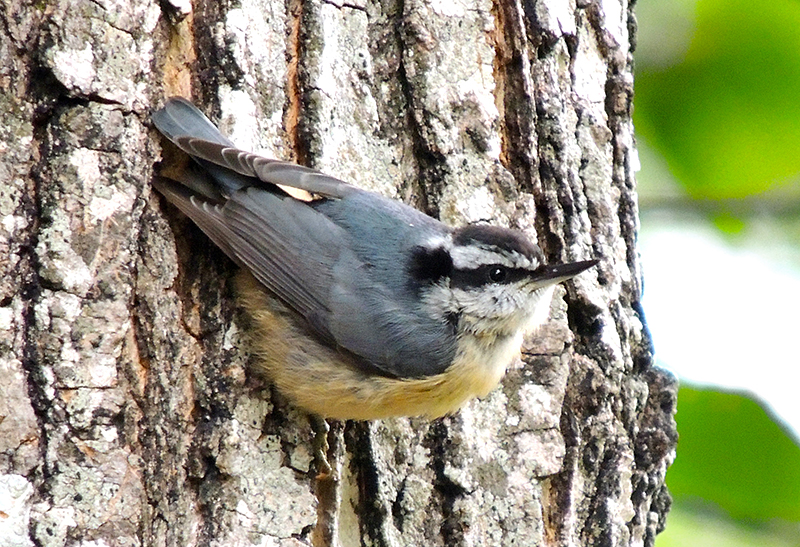
Red-breasted Nuthatches are much smaller than the White-breasted. They have a similar blue-gray back, but they have reddish underparts and a prominent black line through the eye. The sexes look alike, and adult spring and fall plumage looks similar.
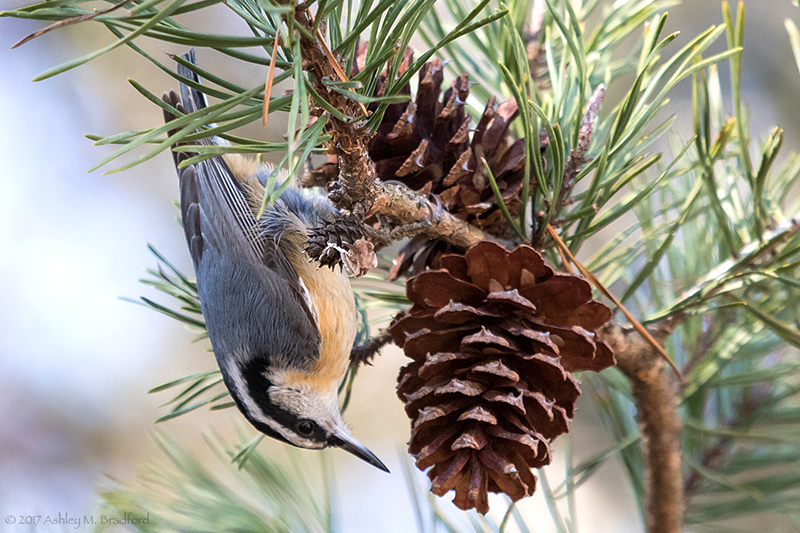
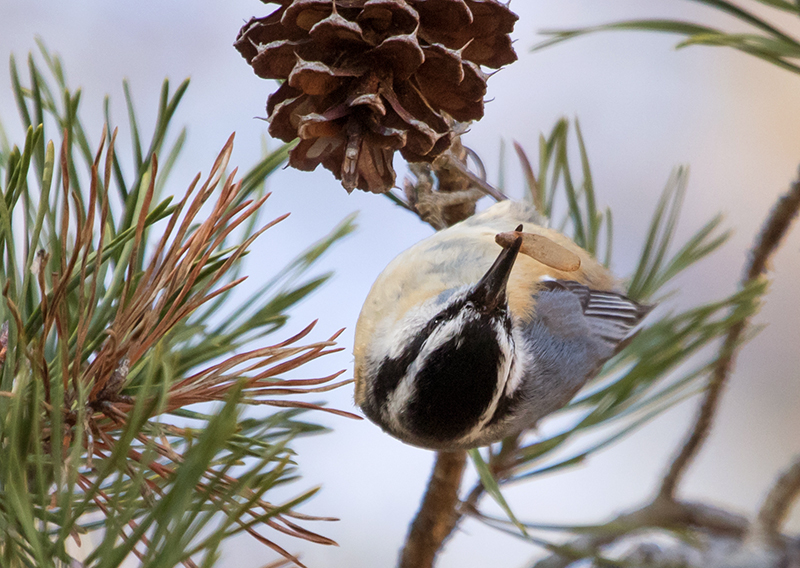
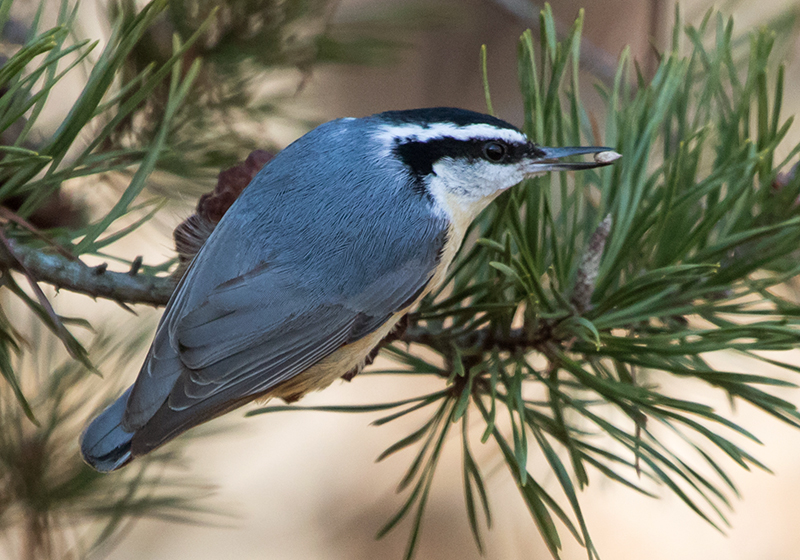
The Red-breasted Nuthatch's bill is narrow, which allows them to extract seeds from conifer cones, which is one of their primary food sources in the winter. During the breeding season, they eat a lot of insects and other arthropods.
Vocalizations
The song of the White-breasted Nuthatch is a series of burry nasal sounds — ank-ank-ank. The song of the smaller Red-breasted Nuthatch sounds like a less substantial ank-ank-ank — as if it is being made by a tin trumpet.
Hear the vocalizations of the White-breasted Nuthatch.
Hear the vocalizations of the Red-breasted Nuthatch.
Notes
Both Red-breasted and White-breasted Nuthatches visit bird feeders. The Red-breasted tends to make short visits, stealing a seed and quickly flying away as if afraid of being seen. White-breasted Nuthatches tend to stay at feeders longer. The White-breasted Nuthatch might eventually be split into three species. There are currently three races who have slightly different plumage and vocalizations. The birds seen at Monticello are part of the eastern race. The other two races are found in the West and the Interior West of North America.
Origin of Names
Common Names: White-breasted from the plumage. Red-breasted from the plumage. Nuthatch means nut hacker.
Genus Name: Sitta means nuthatch.
Species Names: Carolinensis means of Carolina, which was a loose term for the South. Canadensis means of Canada, to reflect the more northerly range.
White-breasted Nuthatch video footage
Red-breasted Nuthatch video footage
Return to the Index
